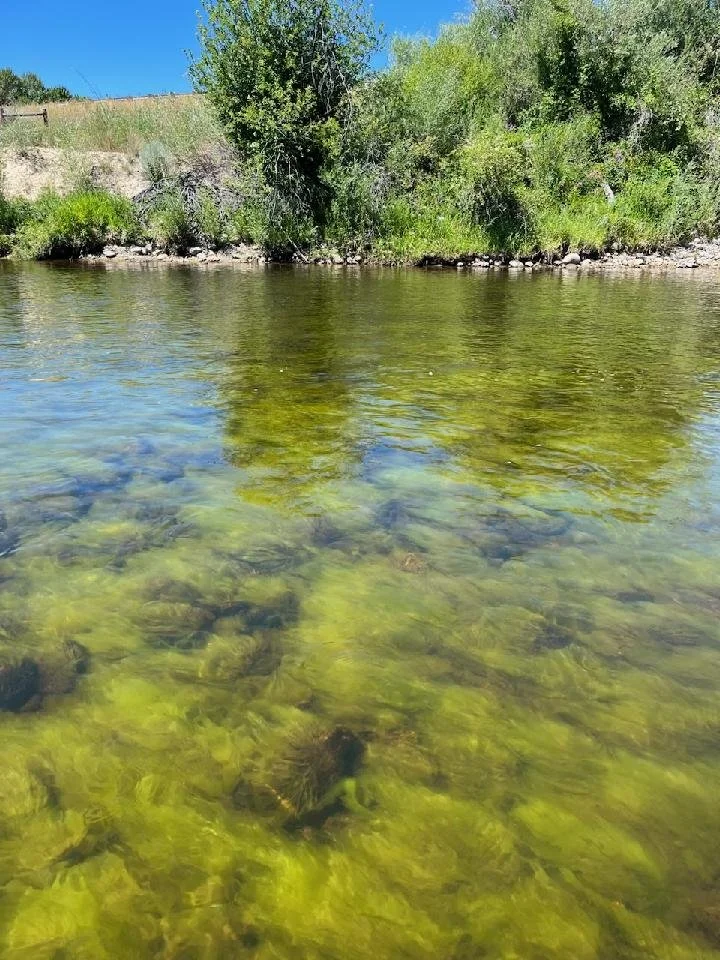Impairment Designation Petition
If you’ve kept up with the news in southwest Montana, you’ve probably heard about our efforts with Upper Missouri Waterkeeper & Save Wild Trout to petition Montana DEQ to designate portions of the mainstem Big Hole River as impaired for nutrient pollution: River Advocates Seek Impairment Designation
The purpose of our water quality data collection project is first to establish a current state of river health. In this case, that process uncovered the presence of excessive nutrient loading, which is contributing to excess algae and lower levels of dissolved oxygen than can fully support aquatic life, especially juvenile fish.
So why did we file a petition?
In short, it’s because our data for the last 5 years during the summer growing months (i.e. July - September; the months that DEQ references for impairment designation) has shown chronic exceedances of water quality standards for nitrogen & phosphorus at some sampling sites.
A petition is the best way to compel an agency to review best-available data to determine whether an impairment designation is warranted.
It’s the first step towards accountability and addressing a problem. And it’s the mechanism that exists to do just that.
**The colored cells highlight the samples & sites which exceeded numeric nutrient standards for water quality during base flow months between 2020 - 2024. — Lab results approved by DEQ
**Site descriptions and the frequency of water quality exceedance
As you can see, certain sites are regularly exceeding those water quality standards by up to, and even over, 3x the thresholds, particularly in the upper river.
For example, the Big Hole at Wisdom has exceeded thresholds for Nitrogen 93.3% of the time, while the Phosphorus threshold for water quality has been exceeded 100% of the time over the course of 5 years. Those results - combined with the recurring presence of large, neon green algae blooms, low levels of dissolved oxygen, changing aquatic invertebrate communities, and continued historic low trout populations - have driven this effort to seek impairment designation. (You can find previous posts about these issues here: Fish Populations & Macroinvertebrate Study)
In other words, the data, both quantitative & qualitative, clearly demonstrate that it’s needed.
Now it’s important to note that our entire project, built to monitor water quality in the absence of any other continuous monitoring effort, has been approved by both DEQ and the Flathead Lake Biological Station since April of 2020. This means that our methodology, quality control/assurance protocols, and data results have all been deemed credible and valid by the Dept. of Environmental Quality. Because the State doesn’t have the capacity to monitor water quality, we stepped up to build a program to address that data gap. And this is what those data show.
The Petition itself can be found here:
Unfortunately, as you may have also seen in southwest Montana news (DEQ Response), DEQ has decided not to grant the impairment designation because they have chosen not to apply numeric water quality standards.
If you’ve been an observer of water quality legislation, you’ll notice that DEQ references SB358 from the 2021 Session (which attempted to remove numeric water quality standards) as the reason they will not be designating the Big Hole as impaired for nutrient pollution.
Our petition wasn’t denied due to problems with the data (i.e. quality control, submission protocols, etc.), as evidenced by this quote directly from DEQ to the Montana Standard: ‘the Big Hole River Foundation’s water chemistry data collection efforts “follow yearly predetermined sampling plans, use an accredited lab and meet DEQ’s requirements for beneficial use assessment program. A review of their data did not indicate any quality assurance problems.”’
Notably, the transition to “Narrative Standards” in place of numeric standards was stymied on multiple fronts.
First of all, the Nutrient Working Group convened to determine what using narrative standards should look like was unable to come to consensus and disbanded, leaving no clear-cut guidance on narrative standards or their application.
But most importantly, SB358 was found to be in violation of the Clean Water Act (CWA) by the EPA in May of 2022, in a decision that affirms numeric standards as both best-available science for water quality and current “law of the land”. The letter from the EPA striking down SB358 is below:
In an effort to accommodate their request for supplemental materials to support our request for impairment (Won’t Take No For An Answer), we have sent DEQ our Macroinvertebrate Report, all Aquatic Plant Visual Assessment Forms (AQPVA) documenting the presence and % coverage of algae from 2022 - 2024, as well as photos documenting the algae blooms.
We don’t know what the future holds, but we have provided data and supporting materials that, by literally any metric - numeric or narrative, show that this designation is warranted. And as a result, we have urged DEQ to reconsider its decision.
The benefits of an Impairment Designation are many:
Obliges DEQ to create a TMDL for mainstem nutrient pollution (i.e. Total Maximum Daily Load…. a pollution diet)
Potential land use changes cannot add to an existing impairment, thus forcing a more stringent process for development
Obliges DEQ to narrow down input sources and work with landowners to reduce inputs
Obliges DEQ to find and direct more resources to be applied to the issue
Increases access to funding for restoration work to improve habitat and reduce pollution
Our local Biologists have expressed that this would be absolutely helpful to them in securing additional funds for mainstem river habitat and nutrient reduction projects….. which will benefit the fishery and ensure that our water quality is meeting the standards to support all beneficial uses.
We agree.
Because now that we know what the current state is, it’s time to put aside the blame game, acknowledge this reality, and get to work to address it with all resources at disposal.







